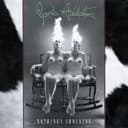The Lydian mode follows the interval pattern: whole, whole, whole, half, whole, whole, half (W-W-W-H-W-W-H). This pattern creates a major scale with a raised fourth degree, which is the defining characteristic of the Lydian sound. In C Lydian, this means the notes C-D-E-F♯-G-A-B, where the F♯ creates an augmented fourth interval (also called a tritone) from the root. This raised fourth distinguishes Lydian from the Ionian mode (traditional major scale) and gives it a suspended, unresolved quality that sounds simultaneously bright and mysterious. The mode's tonal center remains firmly on C, but the F♯ prevents the scale from settling into conventional major tonality, creating harmonic ambiguity that composers have exploited for centuries. Understanding this structure helps pianists recognize Lydian passages in existing music and compose their own Lydian-flavored melodies.
Lydian in Film, Jazz, and Progressive Rock
The Lydian mode's dreamy, ethereal quality has made it indispensable in film scoring, particularly for scenes conveying wonder, magic, or transcendence. John Williams famously employed Lydian harmonies in the main themes for "E.T." and "Harry Potter," using the raised fourth to evoke childlike wonder and magical atmosphere. In jazz, musicians like McCoy Tyner and Chick Corea have built entire compositions around Lydian sonorities, appreciating its ability to create tension without the darkness of minor modes. Progressive rock bands such as Yes, Dream Theater, and Tool frequently incorporate Lydian passages to achieve their signature sophisticated, expansive sound. The mode also appears prominently in the music of Joe Satriani, particularly in "Flying in a Blue Dream," where the Lydian tonality reinforces the song's soaring, optimistic character. Related modes worth exploring include F Lydian (down a fifth) and G Lydian (up a fifth), which offer similar tonal colors in different keys.
Chord Progressions and Practical Applications
In C Lydian, the most characteristic chord is Cmaj7(♯11), which explicitly states the raised fourth in a harmonic context. Common Lydian progressions emphasize movement between the I and II chords (Cmaj7 to Dmaj7), as both chords naturally occur in the mode and the II chord contains the distinctive F♯. Another effective progression moves from Cmaj7 to D/C (a D major triad over a C bass), suspending the tonic while highlighting the Lydian color. Jazz pianists often employ the progression Cmaj7 - D/C - Em7 - D/C to maintain the Lydian sound throughout a harmonic sequence. To avoid inadvertently shifting to C major, be careful with the IV chord position—in Lydian, you would use a II chord (Dmaj7) rather than a traditional IV chord (Fmaj7), as F natural would cancel the Lydian character. Practice vamping between Cmaj7 and Dmaj7 while improvising melodies that emphasize the F♯, and experiment with resolving phrases to F♯ rather than F natural to internalize the Lydian sound.
Learning Tips and Modal Relationships
The most effective way to learn C Lydian is to first master G major, then practice playing those same notes while treating C as your tonal center. Play C major scale patterns you already know, then raise every F to F♯—this simple adjustment instantly transforms familiar territory into Lydian space. Compare C Lydian directly with C major by alternating between the two, focusing on how the single note difference (F♯ vs F) dramatically alters the emotional character. Practice modal cadences that emphasize the tonic C while showcasing the F♯, such as resolving melodies on the sequence E-F♯-E-C or C-D-E-F♯. Understanding the relationship between Lydian and other modes built from the major scale helps contextualize its sound: while C Dorian offers a minor color and C Mixolydian provides a dominant flavor, Lydian maintains major brightness with added harmonic sophistication. Set aside dedicated practice time to improvise freely in C Lydian over a Cmaj7 or Cmaj7-Dmaj7 backing track, training your ear to hear F♯ as the "correct" fourth degree until the Lydian sound becomes second nature.





